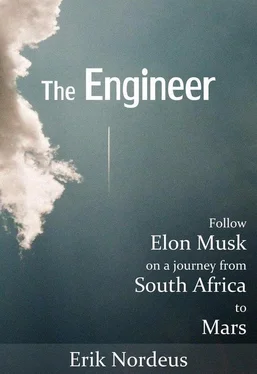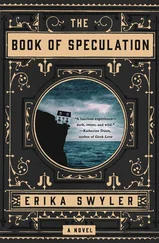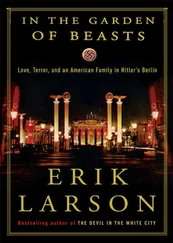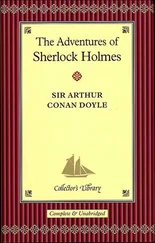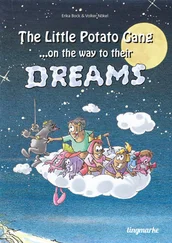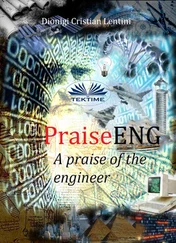Before astronauts are allowed to fly with the Dragon, NASA will subject the craft to an intensive review called NPR 8705.2B, short for Human-Rating Requirements for Space Systems. These demands have become more difficult to follow since the last time we traveled to the Moon because our society tolerates only smaller risks. When early rockets blew up, you could hear comments like, “Oh, thank God the monkey wasn’t in that one.” Today it wouldn’t be acceptable to put an astronaut on the top of a converted ICBM originally designed to deliver nuclear weapons. The Space Shuttle was statistically likely to suffer 9 fatal accidents per 1000 launches, but it changed after the Space Shuttle accident in 2003 to 1 in 1000. 297
SpaceX designed the first version of the Dragon capsule to meet 80 percent of NASA’s Human-Rating Requirements simply because they had to if NASA would allow it to deliver cargo to the International Space Station. The capsule was from the beginning equipped with windows. “Technically, if somebody were to stow aboard the cargo version of Dragon, they’d actually be fine,” Elon said. “I mean, hopefully.” What SpaceX needs to add to the design are a launch abort system, seats, and a full life support system. The launch abort system will be designed so the capsule on the top of the rocket can fly away from the rocket if something happens after the launch. Not having one is like a military aircraft without an ejection seat. 297
“Everyone who tries to reinvent this business believes that auto companies are populated by dummies who don’t understand Moore’s Law,” General Motors said. But compared with a silicon chip, manufacturing a modern car is more complicated. A car has to be of a certain size with parts from across the world, and each customer has chosen their own color and technical details. Except the parts made in-house, Model S consists of 2000 parts from 200 suppliers. All these parts have to come together at the right place and at the right time – or the factory will stop. 59This is what SpaceX and Tesla needed as they grew to more complex entities. Elon accepted the challenge. “I think manufacturing is really cool,” he said. “It’s like the ultimate Lego.” 190
“It’s actually astounding that you can buy a car with all the things a car has for $20 to $30 000,” Elon said. “There’s a whole bag of tricks that the industry has come up with over many decades to make a car super-reliable at a super-low cost.” 325A description of these tricks is impossible without first telling a short story about how Toyota became the world’s largest car manufacturer.
Toyota is today is a well-known car manufacturer. But in the early 20th century, Toyota was a family loom business called Toyoda Automatic Loom Works. The founder of the company, Sakichi Toyoda, had a son, Kiichiro Toyoda, who was a frail and sickly boy. No one thought he had the physical capacity to become a leader. Sakichi knew he could let his son take over the loom business, but he also knew that cars would be the next big thing. “Everyone should tackle some great project at least once in their life,” Sakichi told his son. “I devoted most of my life to inventing new kinds of looms. Now it is your turn. You should make an effort to complete something that will benefit society.” To learn how to build cars, Kiichiro studied mechanical engineering at the Tokyo Imperial University. 2
In 1933, Kiichiro founded Toyota Motor Company as a division of Toyoda Automatic Loom Works. The company changed its name from Toyoda to Toyota because they wanted to expand to English speaking countries. After a competition, they decided to choose Toyota because the name worked better in Japanese and English, and because they thought the eight strokes to write Toyota in Japanese would bring luck and prosperity 406
After the Second World War, Japan needed to rebuild their bombed cities, so there was a high demand for cars and trucks. But Toyota would still be close to bankruptcy. The high inflation made money worthless and it was difficult to be paid by their customers. To avoid bankruptcy, they cut the salaries with ten percent and 1600 employees had to retire voluntarily. It saved the company. 2
In the 1950s, Toyota knew their factory needed to become more productive. After a twelve week long journey through American factories, they saw that Ford’s factories were ten times as productive. On the other hand, they also saw that the American factories hadn’t changed much since the 1930s when they for the first time visited Ford and General Motors. While the American companies could produce large quantities, the Japanese companies had more limited resources. So Toyota didn’t have any other choice than to evolve Henry Ford’s mass production system if they wanted to catch up with the Americans. This new production system became known as the Toyota Manufacturing System. 2
Toyota’s factories would now manufacture what they needed at the moment. While visiting factories, they also visited US supermarkets where they could see how a product on a shelf was replaced just after a customer purchased it. Toyota took the idea and adapted it to the factory floor. By delivering the parts needed just-in-time, they could minimize the storage requirements. They implemented kaizen , which is Japanese for continuous improvements. The Toyota employees strove always to improve their working methods. 2
All these new ideas can be summarized with the word evolution. “His [Toyoda] amazing innovation was this: he put in place mechanisms in his company that actively encouraged evolution,” Martin Eberhard said. “This was an incredibly bold and risky idea at the time. Toyota has encouraged incremental improvement in every aspect of its business – from the factory floor to vendor relationships to labor relationships to general problem solving in every corner of the company – and today’s Lean system is the result of 50 years of encouraged evolution.” 367
Toyota wanted to build the first overseas factory together with an American company. General Motors accepted the invitation because they wanted to outsource the production of a small car. The factory of choice was a light truck factory in Fremont, California. To show that it was a collaboration between two companies, they renamed the factory to NUMMI [New United Motor Manufacturing]. 2
When NUMMI opened in 1984, General Motors saw how the factory became the most productive of all their factories across the world. The products had a high quality, and the factory was empty – it didn’t look like a warehouse anymore. NUMMI became a learning plant for General Motors to which they sent their employees to learn the secrets behind the Toyota Manufacturing System. 2
The Toyota Manufacturing System spread across the globe to other auto manufacturers, and is often translated with the word Lean. Lately, Lean has spread to other industries such as hospitals, computer programmers, and startups as described in the book The Lean Startup by Eric Ries.
As the secrets behind Toyota’s high productivity and good quality spread, more factories adopted the ideas and increased their productivity and the quality of their products. This, in combination with economic factors, led to a decision by General Motors to stop producing cars in NUMMI. Toyota decided to stop their production in 2010. The factory that initially brought the ideas from Toyota to America was now empty. But who would need a car factory in California with a value of nearly one billion dollars?
* * *
At a rate of 25 per week, Tesla assembled the Roadster in a garage behind the showroom in Menlo Park, San Francisco, and in the Lotus factory in England. But the new Model S would need a large factory. Tesla didn’t want to move to Detroit, even though they would have found many empty factories in the area, and they didn’t want to move the production to another country. 210“I think we are seeing a bit of resurgence in US manufacturing and we’ll see more of it because things are getting not that cheap in China,” Elon said. “I would never build in China, out of intellectual property concerns. It’s asking for trouble there. And I’d have to travel to China all the time.” 190
Читать дальше
